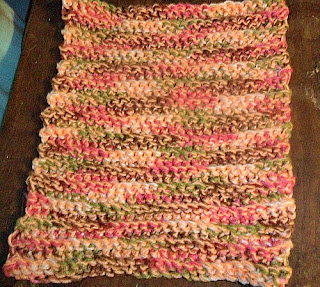Nubi on the Woolsack
Actually, the Lord Chancellor of England sits on the Woolsack. Nubi is sleeping on the sack where I keep my acrylic-mix yarns. It isn't easy to get a good picture of a long-furred black cat. Too often it comes out as a black blob or could be mistaken for any other small animal. Nubi's shy about having his picture taken, too.
I featured his litter mate Tiger a few weeks ago. I say 'litter mate', since it's fairly obvious different fathers were involved! Nubi is gentler than Tiger and is the one cat I have who doesn't bite. The reason for that is a fortunately mild case of gingivitis. Nobody knows what causes gingivitis in cats or what to do about it, except for expensive steroid shots. I started mashing up canned food for Nubi, just like I did for Hollywood when he was a baby. When his mouth is bothering him, Nubi eats by dipping his right forepaw into the food and eating off his paw. Lately, he hasn't been bothered and even occasionally eats dry food. If he hurts his mouth, he runs around growling and swearing - you can tell when cats are swearing! Of course, now the other four cats who share his living area now want their food mashed up and mixed in water.
In crafting news, I have machine washed and dried the bathmat and facecloth I wrote about here, and they came out just wonderful! The part-hemp face cloth seems even softer than ever.
Also, I've fixed an inadvertent error on Peaypatch. I had misnamed my online catalog as "Shopping Cart", which I know sounded like you were committing to something. The label is now "Online Store", and I hope you will enjoy browsing.


 .
.






